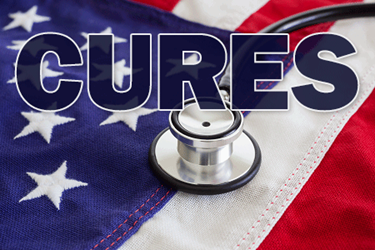Patient-Focused Drug Development Under The 21st Century Cures Act
By Nita Patel, RN, Senior Director, Patient Advocacy at Amicus Therapeutics

More than two years have passed since the 21st Century Cures Act was signed into law in December 2016. According to the FDA, the Cures Act is designed to help accelerate medical product development and bring new innovation and advances to patients who need them faster and more efficiently.1
According to current estimates, there may be as many as 7,000 rare diseases, and while diagnosis of a number of rare diseases has improved over the past years, it still takes an average of seven visits to doctors and specialists for a person with a rare disease to be properly diagnosed, a process that can take years.2 Research and development in rare and orphan diseases has also increased. In addition to a number of new therapeutic options becoming available, advancements in science and technology, especially in the field of gene therapy, have led to potential cures being developed. This is a major step forward, but a great deal of research is still required. One key issue in drug development in this area remains the recruitment of patients with rare diseases into clinical trials, given the small patient populations. Trial design and conduct present their own challenges, so Section 3022 of the Cures Act, Real World Evidence (RWE),3 and its use in support of product review and approval, was a welcome addition.
RWE includes, among other types of data, natural history data for patients. Natural history of a disease can be defined as follows: the natural course of a disease from the time immediately prior to its inception, progressing through its presymptomatic phase and different clinical stages to the point where it has ended and the patient is either cured, chronically disabled, or dead without external intervention.4 It is well established that there are a lack of adequate natural history data for people living with rare diseases, often due to the lack of research in or understanding of particular rare diseases. To the extent that any group natural history data are available, patient-level results have traditionally not been shared with the community — leading to a gap in understanding the disease. In addition, and particularly relevant in the rare disease space, even less is known about the effects of genetic variants on phenotype of a disease. Each person living with a rare disease may experience a different path, while the determinants for a given path are largely unknown and still require much more research.
At Amicus Therapeutics, we have sought to involve and include patients in everything we do, including close collaboration in the drug development process. One example of how we bring patient and caregiver perspectives into drug development is by conducting patient surveys. Within the Amicus organization, four teams — Patient & Professional Advocacy (P&PA), Clinical Research, Program Management, and Medical Affairs — are tasked with bringing the patient voice into Amicus’ clinical research programs, which have included Fabry disease, Pompe disease, and epidermolysis bullosa. To begin the process, the P&PA team collected data that reflected patient experiences for those living with these diseases.
In collaboration with external research and data specialists, key opinion leaders, patient advocacy organizations (PAOs), and patient advisory board members, the team developed patient surveys that included informed consent and were Health Insurance Portability and Accountability Act (HIPAA) compliant. The final questionnaires reflected the varying insights the teams sought to gain for the three diseases and were based on the objectives each survey sought to achieve.
The epidermolysis bullosa survey was completed by 210 patients and provided valuable information on the commonalities and differences in wound burden and management for different types/subtypes of epidermolysis bullosa. The results of this survey were presented at various congresses as platform presentations and posters, and the findings from the survey were shared with other researchers to help with the design of their clinical research programs.
The Fabry disease “Burden of Treatment Survey” was completed by 375 patients. The objective was to learn how ERT infusions impact the daily life of adults (≥18 years old) living with Fabry disease.
The Pompe disease survey consisted of two parts, including a patient questionnaire and a physician questionnaire. The objective was to understand the burden of disease from the perspective of both people living with Pompe and the physicians treating them, to determine if a difference exists between the two. The results of this survey were presented at a number of international medical meetings. At the poster presentation during the 14th Annual WORLDSymposium in 2018, physicians were surprised by the difference between their views and those of patients regarding the burden of disease. This clearly signals that more research is needed to capture the burden of disease directly from patients. The results of this survey continue to be evaluated due to the sheer amount of information collected. The ultimate goal is to share the information collected with the community sometime in the future.
Collaborating with patients, whether in the design of a trial or through the collection of RWE, is a very important aspect of our clinical development program, and we have multiple ways to bring the patient voice to drug development. The P&PA team ensures that the patient perspective is considered in everything we do, including in planning and conducting clinical research. The team engages with the patient and caregiver community so that Amicus employees learn directly from patients. P&PA does this in several ways: lunch & learn programs, patient advisory boards, patient focus groups, patient surveys, PAO relationships, and by learning from people with rare diseases at patient meetings and congresses. This all with the goal of not only ensuring that the patient voice is incorporated in Amicus’ clinical development programs in rare diseases, but to identify and find solutions that can potentially address unmet needs. We strive to address and elevate patient and caregiver concerns and needs throughout a drug development program and continue our engagement with the patient community post-approval.
References:
- www.fda.gov/regulatory-information/selected-amendments-fdc-act/21st-century-cures-act
- https://health.usnews.com/health-care/patient-advice/articles/who-can-help-me-with-a-rare-disease
- www.govinfo.gov/content/pkg/PLAW-114publ255/pdf/PLAW-114publ255.pdf
- Posada de la Paz M; Groft SC. 2010. Rare diseases epidemiology. Vol. 686
About the Author:
 Nita Patel is a registered nurse with experience in clinical research, obstetrics, and genetic nursing. She joined Amicus in September 2011. Her expertise in lysosomal diseases was gained from managing a lysosomal treatment center for approximately 15 years at St. Peter’s University Hospital in New Brunswick, NJ. Patel has also provided training and education for patients in renal failure receiving peritoneal dialysis, prenatal toxicology counseling and testing, and monitored studies in lysosomal disorders. Her passion is to advocate for patients and represent their voice to industry and in drug development. Patel has been an ambassador for Needy Meds since 2012; she continues to help patients with their needs to access the medical care they deserve. She has been a faculty member for Patient Advocates in the Life Sciences (PPALS) in 2016 and lectures on “Patient Advocacy and Return on Investment.”
Nita Patel is a registered nurse with experience in clinical research, obstetrics, and genetic nursing. She joined Amicus in September 2011. Her expertise in lysosomal diseases was gained from managing a lysosomal treatment center for approximately 15 years at St. Peter’s University Hospital in New Brunswick, NJ. Patel has also provided training and education for patients in renal failure receiving peritoneal dialysis, prenatal toxicology counseling and testing, and monitored studies in lysosomal disorders. Her passion is to advocate for patients and represent their voice to industry and in drug development. Patel has been an ambassador for Needy Meds since 2012; she continues to help patients with their needs to access the medical care they deserve. She has been a faculty member for Patient Advocates in the Life Sciences (PPALS) in 2016 and lectures on “Patient Advocacy and Return on Investment.”
